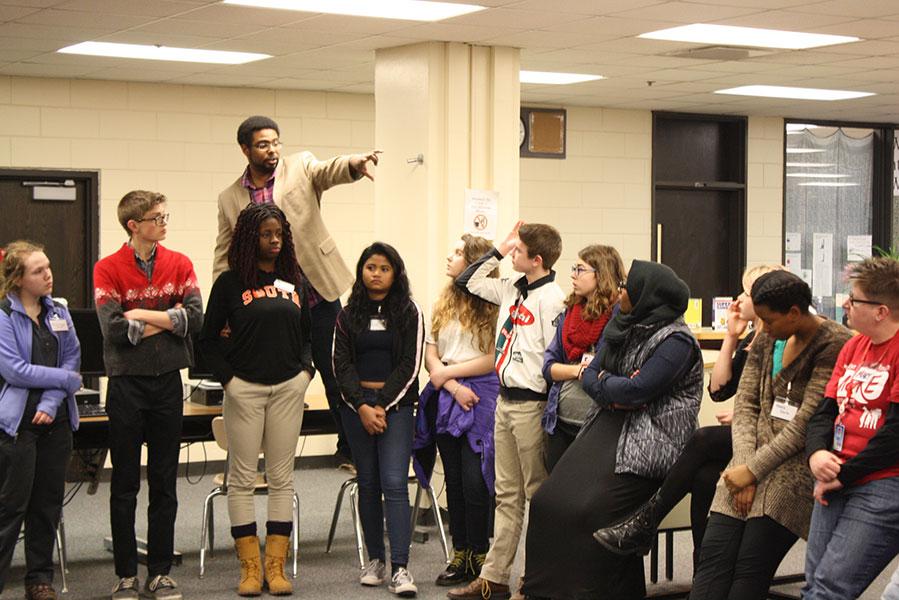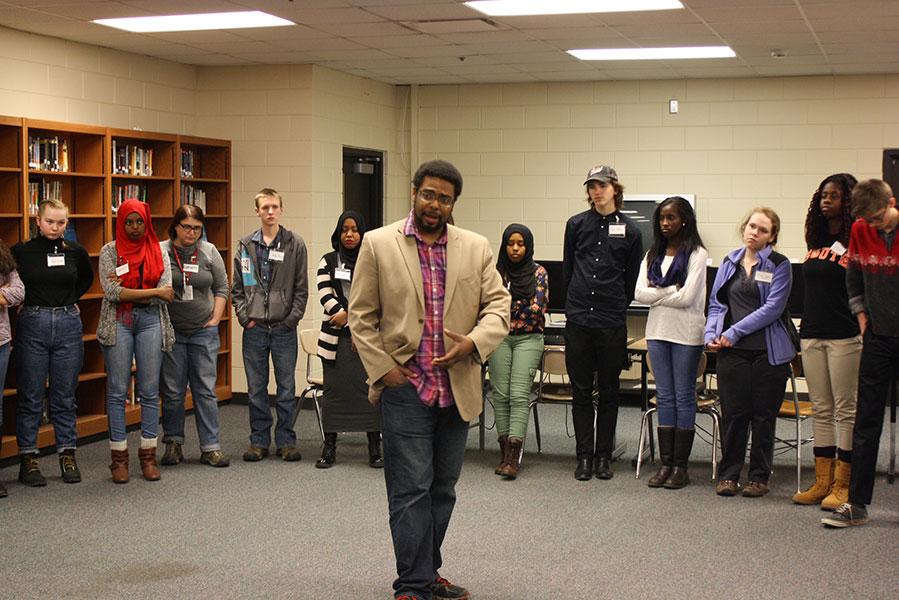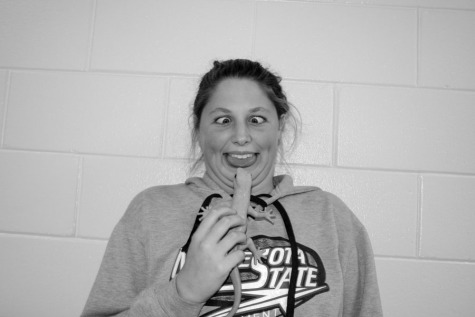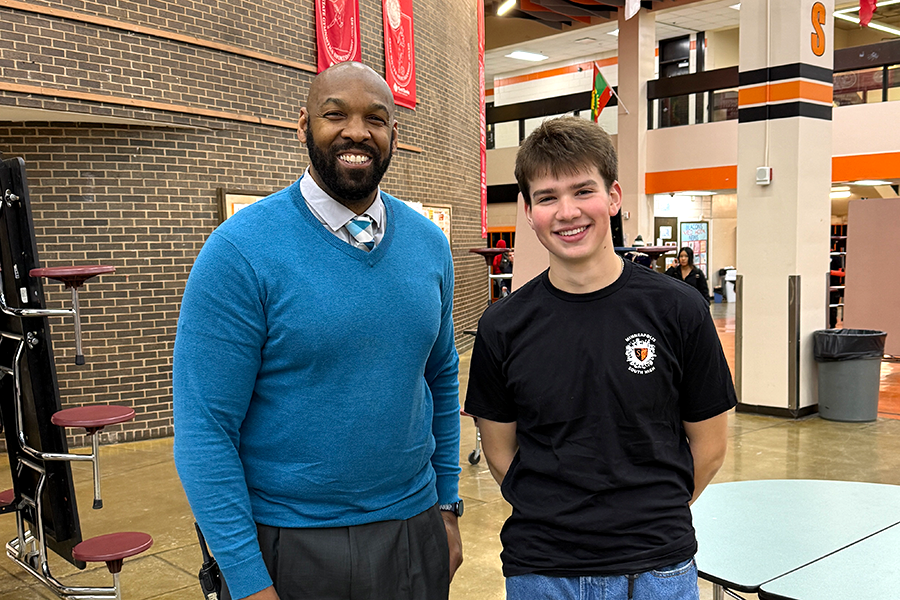Peer education group forms to combat racism in the community
February 6, 2015
On Friday, January 16th, forty South High students decided to spend their day off of school by coming back to campus. These students were there for a workshop as part of the newly reformed SUSOSH (Stand Up Speak Out South High): a group committed to leading the South community into becoming more racially tolerant and aware.
Senior Mekhi Taylor, co-president of s.t.a.r.t. and participant in SUSOSH, explained why he believes South needs this group, “We are the most diverse school in the district, but there is a lot of segregation. It’s not intentional, but we tend to interact only with people that we relate with.”
SUSOSH was originally formed in 2008 by members of the Gay Straight Alliance (GSA) student group to promote tolerance of the LBGT community. It later evolved to include additional topics such as anti-racism.
“It started off as a training workshop made up of a bunch of student volunteers. I found community leaders to come in and facilitate workshops around race, class, gender, sexual orientation and sexual identity. We split all of the students into smaller groups and went into classes and repeated those workshops,” explained the creator of the group, South 2009 alum Emily Butler. “We gave people the strength and resources to confront racism, sexism, and homophobia in our school where otherwise they couldn’t.”
They meet on a regular basis to discuss and learn about these topics, in preparation for leading their peers through all-school workshops that would promote equality. However, these workshops only took place once a year, on MCA test taking days.
“All the students got this information at one time, but the rest of the year nothing was happening through SUSOSH. . . [SUSOSH leaders] really wanted to turn it into something more regular where maybe once a month or once a quarter, students would be participating in peer-led workshops on these issues,” reflected advisor Corinth Matera. The group ended after two years in 2010. “It ended partly because of a lack of capacity by adults. I was teaching five classes, I had a full time job, and it was a lot of effort . . . I think that one of the things that is making it possible to happen again now is that we have an Equity and Diversity Coordinator.”
When Diversity and Equity Coordinator, Ethan Dean, was hired at South High, the opportunity for SUSOSH to reform emerged. “When I first came [to South High] in September, I was exploring what South had been like before I came here, to get an understanding about where I was. [SUSOSH] was mentioned to me by several staff members… I set it on the back burner. I thought it was a great idea and [I’d want] to do something like that again,” Dean said.
That moment arrived after seeing students’ reactions to the Grand Jury decision in the Michael Brown case. Dean had reason to believe that it was time to bring SUSOSH back to South.
“We saw a lot of student initiative and student leadership in response to the Grand Jury decision, both in the sit-in and in the walkout. A lot of the staff here in the building were really impressed by that, and even more so [impressed], when we came back to the building and students were organizing [student-sponsored opportunities for] conversations about it,” Dean said.
“We made a promise to the students that organized [the gatherings] that we were going to do something to continue on [anti-racism work] and that’s when we thought SUSOSH was a perfect fit,” he continued.
Building off of the momentum started by the walkout, Dean met with Mr. Aponte and Anthony Galloway, the Student Learning Program Specialist from the Dare 2 Be Real program, in early December to decide where to go next. They decided that the framework that Dare 2 Be Real provides paired with SUSOSH’s ideals would be a perfect fit for South.
Because of the students’ passions to have discussions revolving around anti-racism, the goal was to have SUSOSH begin as fast as possible.
Dean explained that South commitment, “to having social justice and anti-racism activities occurring right now” is serious. He continued, “And not just now . . . It’s important to us to put the focus on what makes South High a one-of-a-kind place. It is rare [to have] this much diversity and we want to take advantage of that to the fullest.”
At meetings, the group wants to “empower young people to be anti-racist leaders [having] the opportunity to mentor other students through classroom presentations, discussion facilitations, collaborative inquiry, and increased participation in cross cultural learning experiences,” according to the group’s retreat permission slip form.They provide activities that enlighten participants about the different experiences that people of different race, culture, and gender face. Taylor explained, “[We’d] talk about ways to make our community better, less biased, less racist.”
One activity that stood out to Taylor in the workshops was where the participants shared times when they had felt like their experience at South was affected by their race. “We did a speed dating thing where we sat in two circles, one in the middle and one around. [Galloway] would ask us different questions and we’d answer each one, then rotate partners,” said Taylor.
Another notable activity was when Galloway asked the students to create a “green book” of South High. He explained that the green book was a guide that told people of color where it was safe to travel, stay, or eat in the South before the civil rights movement in the 1960s. The students shared places at South that they considered to be safe. Part of the exercise was designed to ensure that everyone realized that this information would vary by perspective. In essence, safety would not be defined the same way by all individuals.
This may sound like it could be a little uncomfortable for some people, however, the group encourages individuals to step outside their comfort zone in order to empathize with what others are experiencing.
Dean explained, “This is uncomfortable work and one of the biggest things about that is [accepting] that we are going to be uncomfortable and not shy away from conversations that make us feel uncomfortable. That’s why the potential of productive conversations never gets met. People go for comfort first, instead of becoming comfortable with the discomfort. Understanding that when you’re uncomfortable, that’s when the work starts.”
Eventually the group plans on taking what they’ve learned from these meetings and leading class workshops and discussion throughout South. Both Matera and Dean commented on how this conversation is so much more meaningful when it’s between two peers than between an adult and a student.
Taylor explained, “A lot of times we hear from people that are older . . . but if we hear from people of our own age group, the students themselves, it’s better. We would have a better impact on our peers [than adults], so it would affect a lot.”
Matera elaborated, “From my experience as a teacher, [I’ve witnessed] when you trust students with real responsibility and give them the opportunities to grow, amazing things happen. . . I think the power of SUSOSH [is] the power of student leadership. That’s really important. This stuff is so much more effective coming from students for students.”







